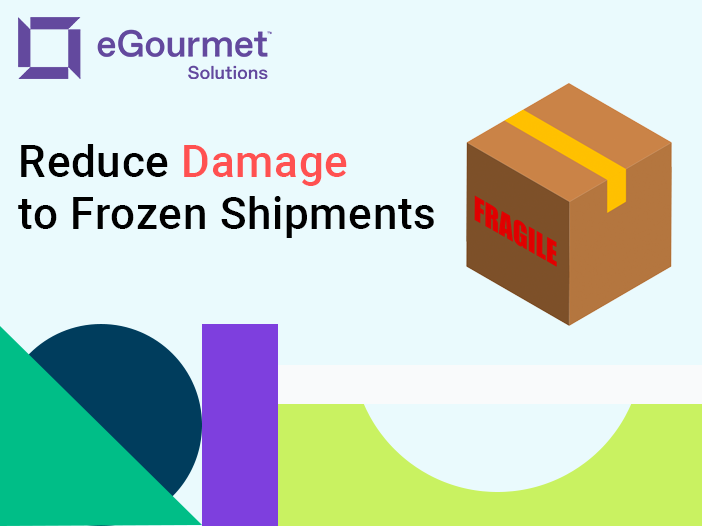
Shipping frozen products presents unique challenges. Ensuring that the products arrive in optimal condition requires careful planning, the right materials, and proper handling procedures. Here are some practical tips to help businesses reduce shipment damage:
- Adopt Proper Packaging: Pack your foods in containers that can not only withstand the rigors of shipping, and also withstand the cold temperatures of the refrigerant you are using, dry ice or gel packs.
- Use Insulated Shipping Containers: Frozen food requires insulation to maintain its temperature during transit. Opt for containers with extra-thick walls. An insulated liner can provide added protection against temperature fluctuations (WebstaurantStore).
- Choose the Right Coolant: Dry ice is an excellent choice for frozen food as it maintains cold temperatures longer than cold packs. However, it’s essential to handle dry ice with care, using gloves and goggles. Ensure the food doesn’t directly touch the dry ice and label packages containing dry ice clearly.
- Screen for Damaged items: Seal Food Properly: Before placing items in the shipping container, ensure they are sealed tightly in plastic bags or vacuum-sealed packages. This not only helps maintain freshness but also prevents potential leaks.
- Pack Tightly: Pack the food tightly to prevent movement within the container. Movement can lead to temperature changes, potentially causing the food to defrost. Using packing peanuts or other padding can help keep items in place.
- …but also Avoid Overpacking: While it’s essential to ensure products don’t move around, overpacking can lead to crushed or damaged items. Ensure there’s enough padding to protect the products without putting too much pressure on them.
- Label Clearly: Clearly mark packages containing frozen items. Labels such as “Perishable – Keep Frozen” or “Contains Dry Ice” can inform handlers of the package’s contents and any special handling requirements.
- Monitor Temperature: Consider using temperature monitoring devices within the shipment. These devices can provide insights into any temperature fluctuations during transit, helping businesses identify and address potential issues.
- Regularly Review and Adjust: Continuously review your shipping practices. Gather feedback from recipients, and adjust your methods accordingly. This iterative process can help ensure optimal product quality upon arrival.
By following these tips, businesses can significantly reduce the risk of shipment damage, ensuring that their frozen products arrive in the best possible condition.